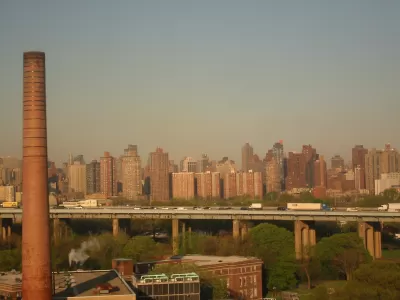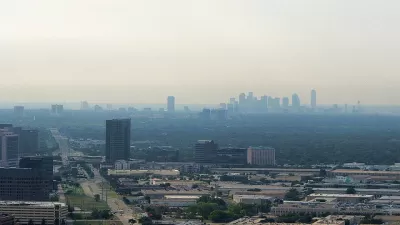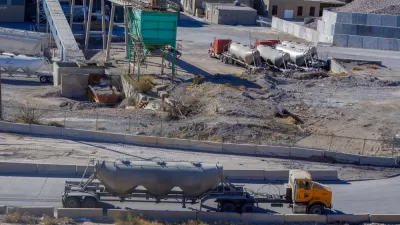Long used to promote inequality, zoning and land use are now helping to keep vulnerable communities safer and cleaner.

Nicole Javorsky writes about a new report from the Tisch Environment and Design Center at The New School that looks at how local zoning and land use policies are promoting environmental justice. Historically, municipalities used these planning tools to perpetuate segregation and force low-income communities and communities of color to bear the burdens of polluting facilities and industries.
But, in cities across the country, zoning and land use regulations are now keeping hazards out of neighborhoods, providing the impetus for environmental justice programs, encouraging an environmental justice lens as part of the environmental review process, and bringing environmental justice considerations into comprehensive planning.
While many examples affect future projects, existing land uses are also the target of this strategy, says Javorsky:
For example, National City [in California] grappled for a long time with “an excess of polluting industries due to mixed-use industrial and residential zoning,” according to the report. Now, National City has an amortization ordinance, which phases out industries near sensitive areas and includes a process for relocating businesses.
The report also points out that local governments are most often responsible for the decisions about where to site hazardous facilities and inaction at the state and federal levels has helped drive local environmental justice efforts.
FULL STORY: Which Cities Have Concrete Strategies For Environmental Justice?

Study: Maui’s Plan to Convert Vacation Rentals to Long-Term Housing Could Cause Nearly $1 Billion Economic Loss
The plan would reduce visitor accommodation by 25,% resulting in 1,900 jobs lost.

Alabama: Trump Terminates Settlements for Black Communities Harmed By Raw Sewage
Trump deemed the landmark civil rights agreement “illegal DEI and environmental justice policy.”

Why Should We Subsidize Public Transportation?
Many public transit agencies face financial stress due to rising costs, declining fare revenue, and declining subsidies. Transit advocates must provide a strong business case for increasing public transit funding.

Paris Bike Boom Leads to Steep Drop in Air Pollution
The French city’s air quality has improved dramatically in the past 20 years, coinciding with a growth in cycling.

Why Housing Costs More to Build in California Than in Texas
Hard costs like labor and materials combined with ‘soft’ costs such as permitting make building in the San Francisco Bay Area almost three times as costly as in Texas cities.

San Diego County Sees a Rise in Urban Coyotes
San Diego County experiences a rise in urban coyotes, as sightings become prevalent throughout its urban neighbourhoods and surrounding areas.
Urban Design for Planners 1: Software Tools
This six-course series explores essential urban design concepts using open source software and equips planners with the tools they need to participate fully in the urban design process.
Planning for Universal Design
Learn the tools for implementing Universal Design in planning regulations.
Smith Gee Studio
Alamo Area Metropolitan Planning Organization
City of Santa Clarita
Institute for Housing and Urban Development Studies (IHS)
City of Grandview
Harvard GSD Executive Education
Toledo-Lucas County Plan Commissions
Salt Lake City
NYU Wagner Graduate School of Public Service





























